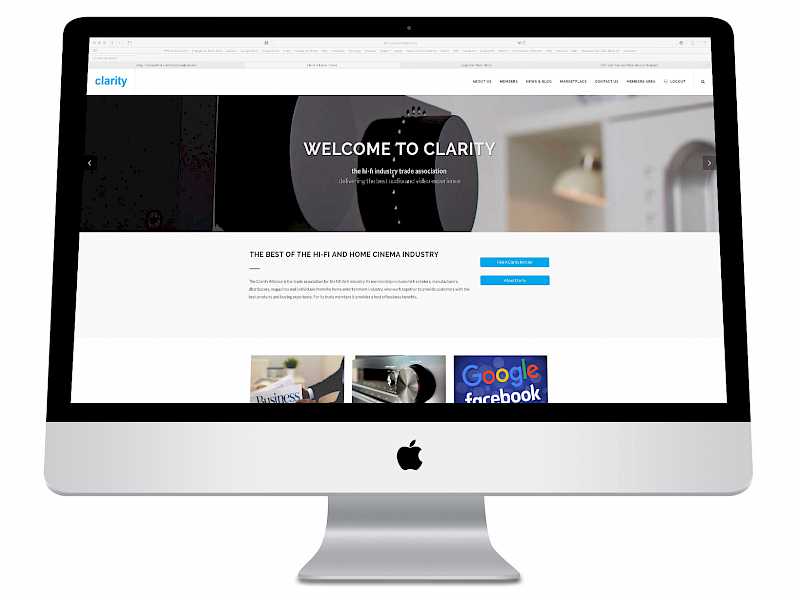If you Google that question you’ll get a million different answers. For example, Entrepreneur magazine says, “When it comes to updating your business website in a timely manner, the one rule is this: There are no rules.” (As an aside, I can’t read the word entrepreneur without thinking of that quote attributed to George W Bush: "The problem with the French is that they don't have a word for entrepreneur." How could someone with that level of understanding become the President of the USA? Couldn’t happen again could it….)
And here’s another take on it, “My best advice: as soon as you have to ask the question, ‘should I update my website?’ is the exact moment when you begin the updating journey.”
That seems like quite a sensible approach, your common sense will tell you when it’s time. You’ll know that your website is looking tired and in need of some TLC. You’ll probably have got bored of it yourself and stopped updating it with news and information. If that’s the case then you definitely need to start the process of creating a new site, because if you’re bored of it, you can guarantee your audience will be and, perhaps more importantly, Google will be too and they will have downgraded your SEO rankings.
This quote from one business observer, also found in response to my question on Google, says a lot about the impression that an up to date website says about companies:
“I feel that if I cannot trust a business to be internet savvy in 2016, then I surely cannot rely on them in general. While a slick website may not be the true representation of a company 100% of the time, first impressions are lasting. For many potential customers out there, not being immediately impressed with a company’s website can be a deal breaker.”
So, with all that advice in mind, we’ve been working on a new Clarity website, that will be launched very soon, maybe even by the time you read this article. The original was created when Clarity launched in the summer of 2012 and has been regularly updated with news and views since then. But times have moved on, the industry has changed the world has changed, the requirements of what a trade association should provide have changed and we know our website has to change to reflect our current purpose.
Now more than ever, the website is the shop window. For many companies, it’s the only shop window and so it’s vital that it’s kept up to date – we all remember those shops of yesteryear that hadn’t changed their dusty old window displays for years. Fall into that trap with a website and your business runs the risk of being dismissed within the first few seconds of someone landing on the homepage. For Clarity, it’s where the vast majority of people will go to find out information about their trade association; it’s where potential new members will go to see why they should join; it’s where the consumers will go if they want to learn more about the industry to see what standards and professional bodies exist and it’s where people will go to find their local dealer. That’s why we commissioned the new site and why we’ll be keeping on top of it with constantly updated content.
The nature of the content is also changing fast. Attention spans are getting shorter and the ability to concentrate long enough to read an article on the new product that’s just launched is diminishing. People like things in bite size chunks now or, even better, in a format that they don’t have to stop and read. That’s where video comes in to its own – it’s visual, accessible and can get the message across in a fraction of the time it takes to read an article. Websites without video content in the (relatively near) future may as well not exist. That doesn’t mean you can’t have any words, but for the instant gratification of your audience the use of video is going to be crucial. Cisco Systems, who know a thing or two about the internet, have predicted in a new report that by 2019 online video will be responsible for 80% of the total global internet traffic!
And how that content is consumed is also changing fast. With more than half the world’s population now using a smart phone, it’s hardly surprising that, according to a report in the Daily Telegraph, more websites are now loaded on smartphones and tablets than on desktop computers. This milestone underlines how computing is rapidly shifting to mobile devices, threatening companies that are reliant on traditional PCs - your website has to work on mobile platforms. At the Clarity Conference earlier in the year, Richard Hartigan of Google said to the audience, “If you don’t have a mobile first strategy, you don’t have a web strategy”.
And ironically, this has an impact on the use of video. Voice-overs on videos are great when viewed in the comfort of the home or office, but who wants to listen to a hired-in famous person talking about the latest piece of hi-fi tech while they sit on the bus, sharing the narrative with all around? As most content is now viewed on mobile devices, which by definition are used in public places, there’s a move away from VOs and to subtitles. So now people view the content and read the words at the same time – you just can’t escape the written word!
The other irony is that a website like the new Clarity one has a primary purpose of connecting people to people. In our industry, it’s not about the faceless pure internet players; the bricks and mortar retailers are fortunately still very important, even if it’s a click and collect service that’s being offered. That’s why, as part of the new website, we specified a comprehensive dealer finder which brings the consumer to their nearest dealer in just a couple of clicks. This is a people business after all, the old cliché of people buy from people is so true in hi-fi and, no matter how much we invest in technology, we’d be well served to remember that.







